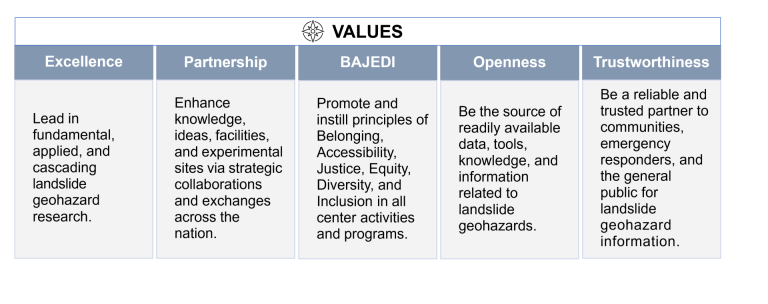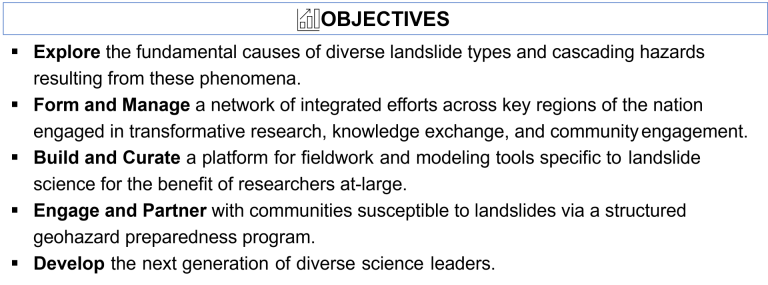The first in-person CCLG strategic planning meeting was held in Jan 2023 in partnership with American Society of Agricultural and Biological Engineers (ASABE) conference. The discussions at ASABE and subsequent inputs from the project team, advisory board, and stakeholders helped inform the first draft of the strategic plan including Vision, Mission, Objectives, Values, and Science Questions.



Overarching Science Questions
- Predictability – What are the key triggers of landslides? How do they depend on lithology, vegetation, topography, climate, hydrologic conditions, tectonics, history, land use? Develop mathematical models for prediction and forecasting. Integrate scales in time and space. Physical as well as statistical models (i.e., ML, AI) will be explored.
- Observation Systems and Integration of Data – Study existing data sources from a risk assessment value perspective. Investigate technologies to improve on the measurements of key indicator variables. This includes remote sensing, autonomous vehicles and drones, small and cheap sensors for displacements and moisture, etc. Data assimilation into predictive models. Data curation.
- What is the relationship between hillslope morphology, fluvial morphology and landslides: a two-way relationship. Cascading impacts related to sediment depositions and transport. Risk evolution and changes in landslide susceptibility after large episodic events.
- Impact of expected climate change on landslide susceptibility: How will changes in fire, rainfall, vegetation impact the occurrence and predictability of landslides. Are landslides carbon sinks or carbon sources – under what conditions?
